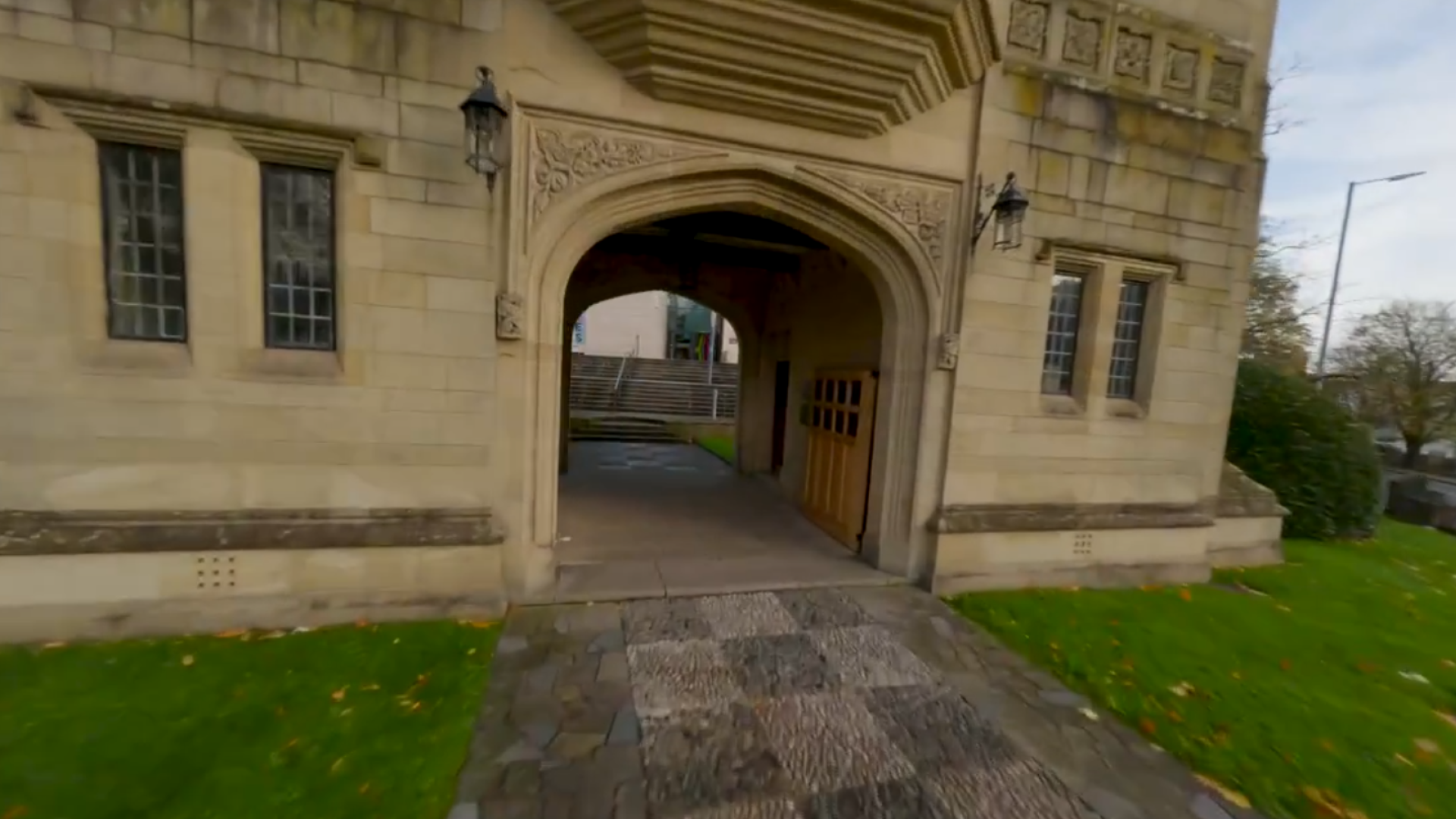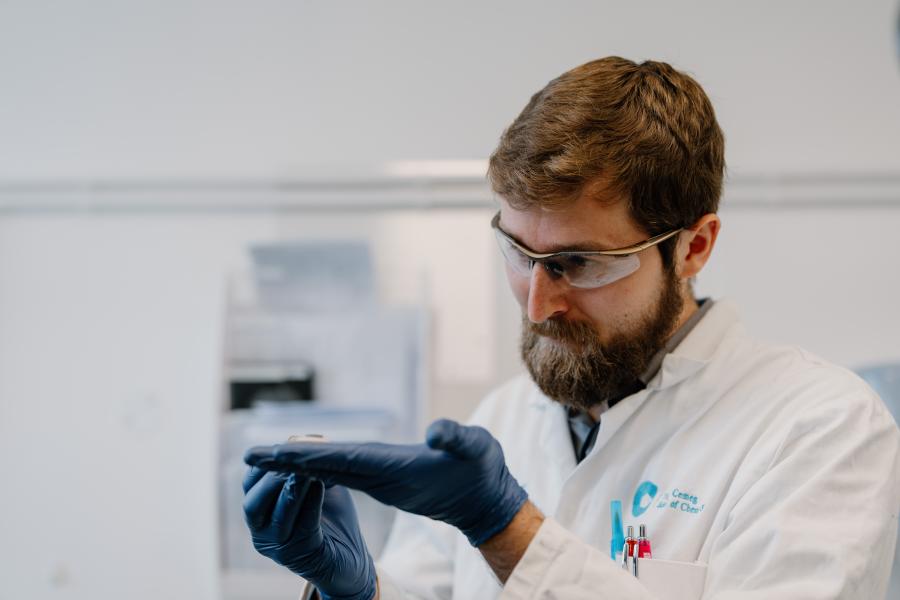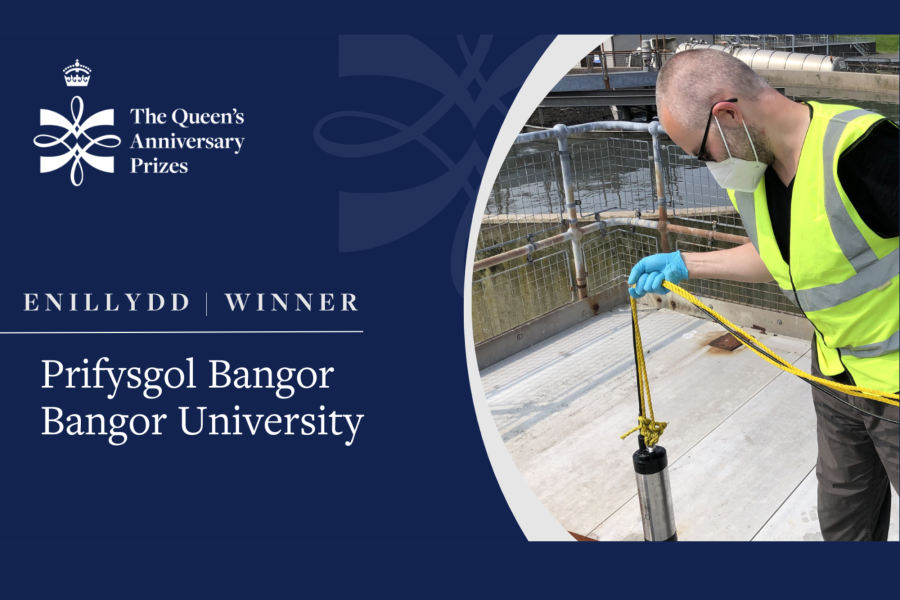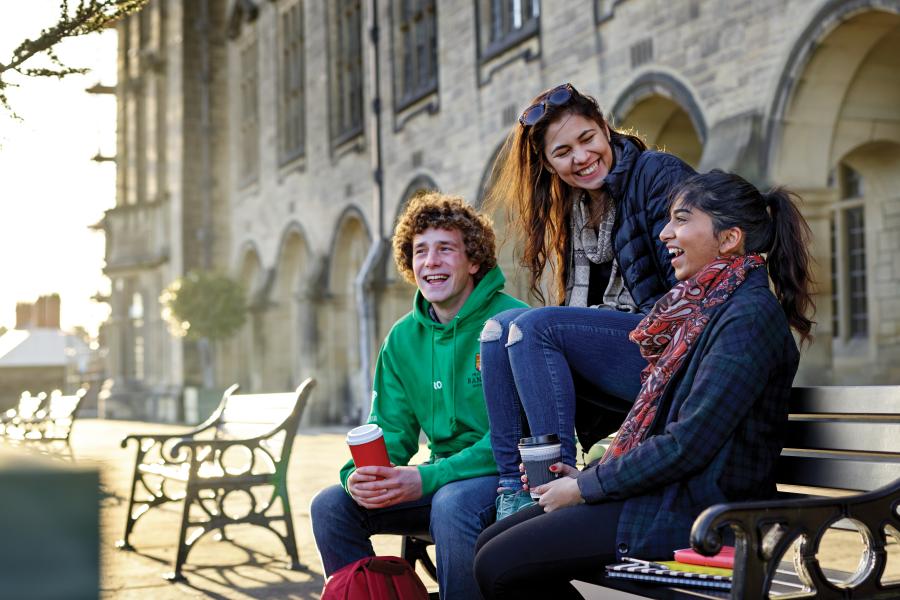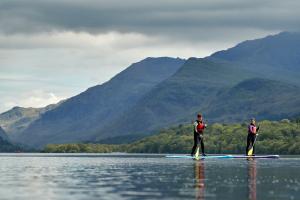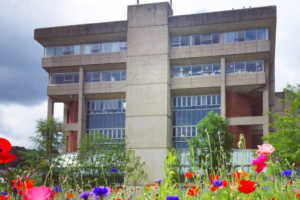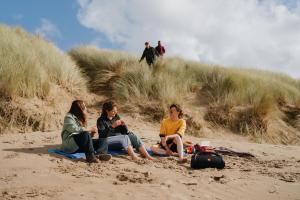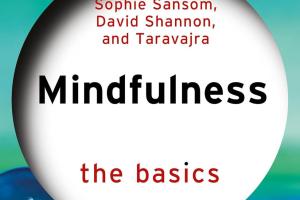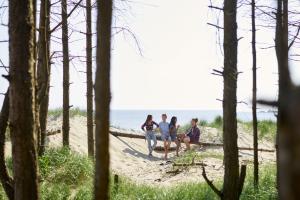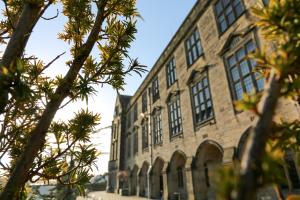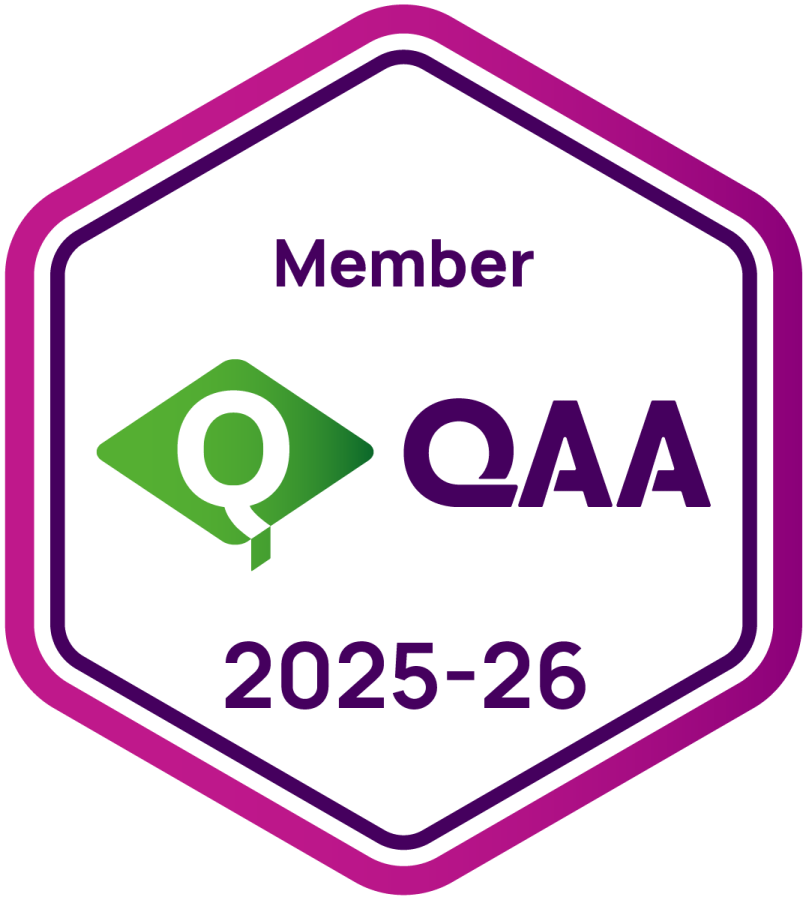Search our courses
DIVE INTO A WORLD OF POSSIBILITIES
From mastering the numbers in Accounting to exploring life itself through Zoology, our wide choice of subjects means you're sure to find the perfect fit for you. Whatever your passion, discover the course that will shape your future and launch your career.
UndergraduatePostgraduaTE TAUGHT POSTGRADUATE Research SHORT COURSES AND PROFESSIONAL DEVELOPMENT (CPD)
Explore Our Research
[0:01] Bangor University
[0:02] is a research powerhouse,
[0:05] A change-maker.
[0:07] Our discoveries are shaping the world today with a focus on sustainability,
[0:13] safeguarding the environment,
[0:16] and promoting economic, social, bilingual and cultural vitality.
[0:20] Our research is seeking solutions to some of the world's most challenging problems,
[0:23] from improving health and wellbeing,
[0:26] to advancing the global 5G economy
[0:30] and finding the energy solutions of the future.
[0:33] Partnering with policy-makers, industry, businesses, and communities
[0:38] Supporting the Life Sciences sector
[0:41] and human performance research in Sport Science.
[0:44] Bangor is advancing technologies and resilience in nuclear power and medicine
[0:48] through our leading Nuclear Futures Institute.
[0:52] Tackling Climate Change with research into Low carbon energy.
[0:58] Addressing one of the planet's greatest environmental issues.
[1:01] Plastic waste and the overuse of single-use plastics
[1:04] and protecting the variety of species and ecosystems
[1:08] through biodiversity conservation research.
[1:12] Our research on Wales, the Welsh language and linguistic skills
[1:16] is inspiring a vibrant bilingual nation.
[1:20] Our discoveries are informing teaching
[1:24] enabling students to learn about research in real-time
[1:28] Our researchers share an ethos embracing
[1:31] courage
[1:32] integrity
[1:33] collaboration
[1:34] confidence
[1:35] and trust
[1:36] with a global outlook
[1:39] that is helping us make a real difference to people's lives.
[1:43] Research
[1:44] at our heart
[1:45] since 1884.
FIND YOUR COURSE
We offer courses across the sciences, arts, business, humanities and law.
Text: THIS
Visual Description: A sweeping drone shot over the Menai Strait, with Menai Bridge to the right and Bangor to the left. The Menai Suspension Bridge stands in the middle beneath a clear sky.
Text: IS
Visual Description: A student reads on a bench in front of Bangor University’s Hen Goleg building on a bright, sunny day.
Text: BANGOR
Visual Description: Bangor University’s Main Arts building, framed by trees in the city centre on a clear blue-sky day.
Text: UNIVERSITY
Visual Description: A close-up shot highlighting the architectural details of Bangor University’s Hen Goleg building.
Text: Where ambition meets belonging
Visual Description: A student stands outside the university’s Music building, looking directly into the camera and speaking to the viewer.
Text: Surrounded by breathtaking beauty
Visual Description: A trio of sweeping Eryri (Snowdonia) drone shots presented in a retro-style film projector sequence, showing Llyn Padarn in Llanberis, Yr Wyddfa, and a flyover of Yr Wyddfa’s peak.
Text: You can’t help but be inspired
Visual Description: A student walks past the colourful mural outside Pontio, looking directly into the camera and speaking to the viewer.
Text: From serene spaces
Visual Description: A sequence of five still images:
– Six students practising yoga at Treborth Botanic Garden.
– A student studying a tree at Treborth Botanic Garden.
– Four students hanging out by the Menai Suspension Bridge.
– A student paddle boarding on Llyn Padarn.
– A group of four students taking a selfie at Aberffraw beach.
Text: To adventurous places
Visual Description: Footage of the Mountain Biking Society cycling at the Braichmelyn downhill track, with two students riding over a ramp.
Text: I’m not just studying in a beautiful place, I’m learning from it
Visual Description: A student walks through Shankland Library, holding a yellow book and admiring the surroundings. She pauses by a window, taking in Bangor’s cityscape, presented in a retro-style film projector sequence
Text: Because learning here is more than lectures, more than books
Visual Description: The same student sits in Shankland Library, looking directly into the camera and speaking to the viewer. She finishes by playfully covering the camera lens with her book.
Text: It’s hands-on, it’s alive
Visual Description: A student wearing overalls lifts a hard hat away from the camera and places it on her head, transitioning from the previous shot. She walks along the bridge to board the university’s research vessel, Prince Madog, and looks directly into the camera.
Text: Shaped by the latest ideas
Visual Description: A sequence of three shots:
– A drone shot of the Prince Madog travelling toward Menai Bridge on the Menai Strait.
– A discussion between three students and two academic staff members aboard the vessel.
– A close-up of an academic animatedly engaging in discussion with a student.
Text: Guided by those who dream big
Visual Description: Four students and an academic train in the clinical skills suite at Fron Heulog. Another student draws blood from a mannequin in the Brigantia building.
Text: Academics whose discoveries are transforming industries
Visual Description:
A sequence of ten still images:
– A professor and two students sampling salt marshes at Henfaes Field Centre, with Ynys Seiriol in the background.
– A close-up of the same professor sampling.
– Two students analysing findings in a laboratory.
– A close-up of a student using an anatomage table.
– An overhead shot of the same students using the table.
– Nursing students wearing virtual reality headsets during training.
– A student inspecting a specimen.
– A student in the ERP lab wearing a monitoring cap.
– A professor and student holding a human brain model in a lab.
Text: Tackling challenges
Visual Description: A law student in a barrister’s wig and gown participates in a moot at the university’s Moot Court, alongside two peers.
Text: Changing the world
Visual Description: A time-lapse of an academic and two students using the imaging scanner at the Bangor Imaging Unit.
Text: In classes small enough for my voice to be heard
Visual Description: A student participates in a business seminar in the Co-Lab space at Pontio, addressing the camera directly.Followed by four still images showing students and academic staff in lively discussion.
Text: In conversations that spark ideas
Visual Description: Two shots of an academic interacting with students at the university’s Bloomberg Terminal.
Text: In forging connections that open doors
Visual Description: A sequence of three clips:
– A drone shot approaching M-SParc in Gaerwen.
– A close-up of one person speaking in M-SParc’s shared area.
– A close-up of the other person listening and responding.
Text: This is a place where my passions are nurtured
Visual Description: The university’s basketball team plays a match at the Brailsford Centre, ending with a slam dunk.
Text: Where I feel empowered to carve my own path, to follow my own dreams
Visual Description: Video footage of two students walking up Dinorwic Quarry in Llanberis, one pauses to speak directly to the camera. Followed by three still images:
– Two students walking toward Castell Dolbadarn.
– The same students exploring Dinorwic Quarry with Yr Wyddfa in the background.
– A close-up of the students smiling at each other beside Llyn Padarn.
Text: Here I’m forming friendships - the kind that last a lifetime
Visual Description: A group of students share pizza and socialise at a pizzeria in Upper Bangor, followed by two students smiling and hugging outside Pontio.
Text: Being supported, encouraged, and lifted every step of the way
Visual Description: A staff member chats warmly with students at Pontio’s Cegin Café. A close-up of a smiling student in the same discussion. Two students laughing together at Aberffraw beach. Students walking past the colourful Pontio mural, smiling and having fun.
Text: In a place where I truly belong. Bangor University - this is your future in action.
Visual Description: A slow-motion montage of all featured students smiling and looking into the camera.
Text: Bangor University. Your Future in Action.
Visual Description: The video fades out with an animated wipe, marking the end.
Discover a vibrant university in a beautiful location that offers a different dimension to student life.
Discover a vibrant university in a beautiful location that offers a different dimension to student life.

